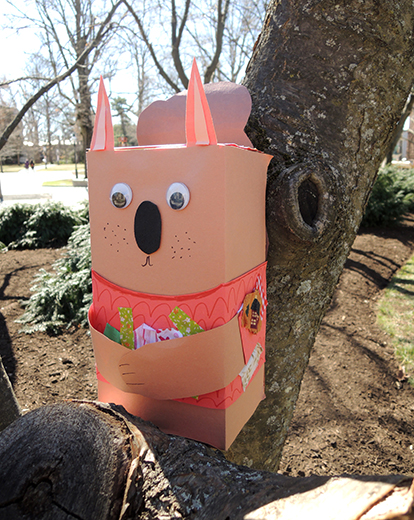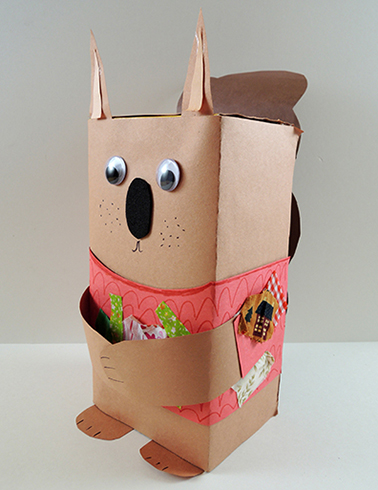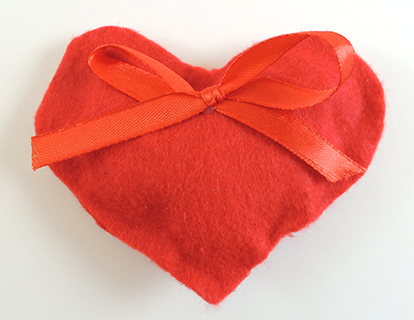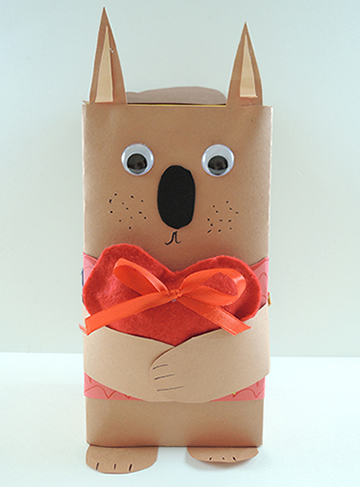 Spring might just be around the corner, but there’s still time to bust out a cozy, super snazzy sweater. Especially if you’re a squirrel with a celebration to get to!
Spring might just be around the corner, but there’s still time to bust out a cozy, super snazzy sweater. Especially if you’re a squirrel with a celebration to get to!
We read Squirrel’s Sweater, written by Laura Renauld and illustrated by Jennie Poh (Beaming Books, 2021). Squirrel is excited about the Winter Warmup party, but when she puts on her favorite sweater (knitted by Granny Gray) it’s considerably smaller and tighter then the previous winter. She asks her friends for help, but despite their best intentions, the sweater gets ripped and unraveled. Clever Squirrel has a solution though, upcycling the sweater materials to make a lovely, huggable heart pillow.
You’ll need:
- 1 large tissue box
- Construction paper
- Red felt
- Cotton stuffing
- Scissors, tape, and glue for construction
- Markers for decorating
- Hot glue
Our project is very simple! Use brown construction paper to cover a large tissue box, then add a tail, ears, and feet. Use another color construction paper (we went with red) to create a sweater for your squirrel, then add two arms that circle around the front of the squirrel like so:
 To make the squirrel’s sweater extra dynamic, we offered a variety of colorful fabric squares for texture. We also attached wiggle eyes and a self-adhesive foam nose, but those are just as easy to draw on with markers.
To make the squirrel’s sweater extra dynamic, we offered a variety of colorful fabric squares for texture. We also attached wiggle eyes and a self-adhesive foam nose, but those are just as easy to draw on with markers.
We absolutely loved the sweet pillow in the book (and there are instructions for making your very own “no sew” pillow at the end of the book – awesome!). To create a mini pillow, glue two felt hearts together, then stuff them with cotton. Top off the look with an (optional) ribbon bow.
 The heart pillow slides right into squirrel’s arms for a sweet hug, just like the story! Aww!
The heart pillow slides right into squirrel’s arms for a sweet hug, just like the story! Aww!






 Our unicorn is the stick horse we designed for this
Our unicorn is the stick horse we designed for this 
